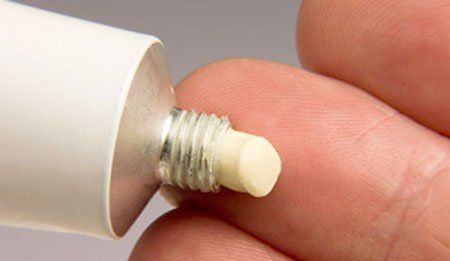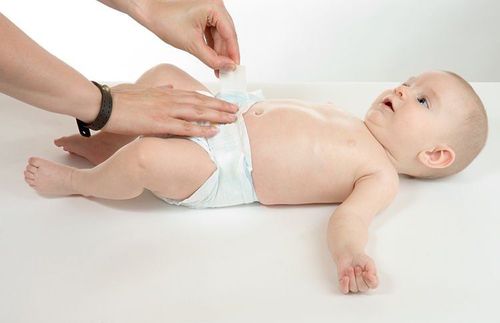This is an automatically translated article.
The foreskin is a thin layer of skin that covers the tip of the penis. If the penis has not been uncircumcised without proper care, men may encounter a number of health problems and daily activities.1. Narrow foreskin
Foreskin stenosis makes men feel pain or have many difficulties because the foreskin cannot be removed, the head of the penis is always covered. This condition is quite common in uncircumcised infant penises. However, in most cases, it is not a cause for concern because the foreskin will gradually fall off by the time the child is 3 years old and can automatically peel off completely in adolescents.Causes of foreskin narrowing include:
Scars caused by pulling the foreskin of the baby too early. Bacterial, viral, or fungal infection of the uncircumcised penis. Inflammation of the penis without the foreskin due to poor hygiene or impact leading to injury. Some common treatments for foreskin stenosis are:
Take antibiotics or apply ointments to fight fungus and infections. Perform light pulling exercises on the foreskin daily, combined with topical steroid ointments to help loosen the tissues. Circumcision in case other treatments have not worked, or with infection and inflammation of the foreskin.
2. Swelling due to strangulation of the foreskin

Sưng mô bao quy đầu hoặc đầu dương vật có thể bị gây ra bởi tình trạng nghẹt bao quy đầu
Common causes of foreskin congestion and swelling are:
Medical personnel do not pull the foreskin back to its original position after it has been removed for examination; Injury from forceful peeling and keeping the foreskin removed for too long; Narrow foreskin leads to infection of the tip of the penis. The swelling of the penis due to blockage of the foreskin will impede blood circulation, making it impossible for blood to move to the tissues at the tip of the penis. If the head scale is not nourished by blood for a long time, there is a risk of very dangerous necrosis. Urgent medical intervention is therefore needed to avoid a forced amputation of part or all of the infant's penis.
You should quickly go to the hospital for an early checkup before the swelling and pain get worse if you notice any of the following symptoms:
Unable to pull the foreskin to cover the head of the penis; Swelling and constriction of the foreskin; Change in the color of the penis; Pain in the head of the penis or foreskin; Loss of sensation in the foreskin or tip of the penis. It should be noted that the patient should not self-administer lubricants and attempt to retract the foreskin by any means. This action carries the risk of complications that change penile function.
Before the procedure, doctors will reduce swelling and use local anesthetic to limit pain for the patient. In cases where swelling from strangulation recurs, excision of the skin may be the best treatment.
3. Inflammation of the foreskin due to infection
Inflammation may be present only on the foreskin, or affect the head of the penis in newborns. Balanitis is caused by infection or some other irritant with common symptoms such as:Small white spots around the foreskin and foreskin Pain when urinating due to swelling of the tip of the penis Itching or pain around the foreskin Dry and thickened foreskin from scratching (Likenization) Abnormal vaginal discharge with a sour odor Infections that are common causes of balanitis include:
Yeast infection, chlamydia, HPV virus or trichomoniasis Gonorrhea Genital herpes Herpes primary or secondary syphilis Chancroid Infectious organisms must be identified to initiate primary treatment accurate and efficient. Common treatments for balanitis are:
Apply steroid cream or ointment with antibiotics and antifungals to relieve symptoms and treat the source of the infection. To maintain hygiene, wash the uncircumcised penis gently with warm water every day to reduce irritation and limit bacteria and fungus accumulation that leads to infection. Mild and unscented soaps can be used. Avoid irritating chemicals in shampoos and clothes. Use gentle body care products for sensitive skin and wear breathable cotton underwear.

Bôi kem steroid hoặc thuốc mỡ có kháng sinh và chống nấm để giảm triệu chứng viêm bao quy đầu
4. Allergic Balanitis
Common symptoms of allergic balanitis include:Sensitive, thickened or itchy skin; Gray, brown, or red patches on the skin; Blisters, bumps, or rashes; Skin with scratches or dryness; Difficulty urinating, bloody urine; Scrotal swelling or pain; Pain during sex, severe pain for more than 2 hours. Balanitis can also be caused by trauma or irritation, specific causes such as:
The tip of the penis gets stuck when the pants are zipped causing injury; Wearing underwear that doesn't fit or is too tight Allergic to chlorine in swimming pools, condoms or bath products; Narrowing of the foreskin in the uncircumcised penis; Psoriasis or reactive arthritis. Treatment will be easier if the cause of the irritation is found. For mild symptoms, patients can self-treat at home by removing the irritant and applying some of the following measures:
Apply a cold washcloth to the affected area for 20 minutes a day, repeating several times. times a day, to reduce swelling and pain; Cover the scratched penis or foreskin with a clean cloth, gauze, or medical bandage to protect the tissue from further irritation. Apply 1% hydrocortisone cream or ointment to relieve itching. Treat allergies with medications, such as diphenhydramine (Benadryl) or cetirizine (Zyrtec). Limit your exposure to irritating chemicals and switch to gentle products. Regardless of the cause, keeping the uncircumcised penis clean is still the most important role in preventing inflammation and allergies.

Viêm bao quy đầu do dị ứng có thể được điều trị bằng thuốc
5. Dry cracked foreskin
Dryness around or cracking of the foreskin is usually caused by:Candida albicans yeast infection; Herpes caused by unprotected sex; Not keeping the uncircumcised penis clean regularly and thoroughly. In addition to dryness and cracking, patients may also notice the following:
Irritated skin, white swelling or redness; The foreskin has a white discharge that resembles cottage cheese; Foreskin contraction. To prevent problems with the foreskin, it is important to wash the newborn's penis daily with warm water, making sure to remove any dirt inside the foreskin.
In addition, hygiene products should be avoided with artificial fragrances or chemicals that can cause allergies or dry the foreskin, creating conditions for bacteria or fungi to grow. In addition, it is necessary to change underwear regularly. For adult men, safe sex with a condom is a way to protect themselves from many dangerous diseases.
Please dial HOTLINE for more information or register for an appointment HERE. Download MyVinmec app to make appointments faster and to manage your bookings easily.
Article referenced source: healthline.com












